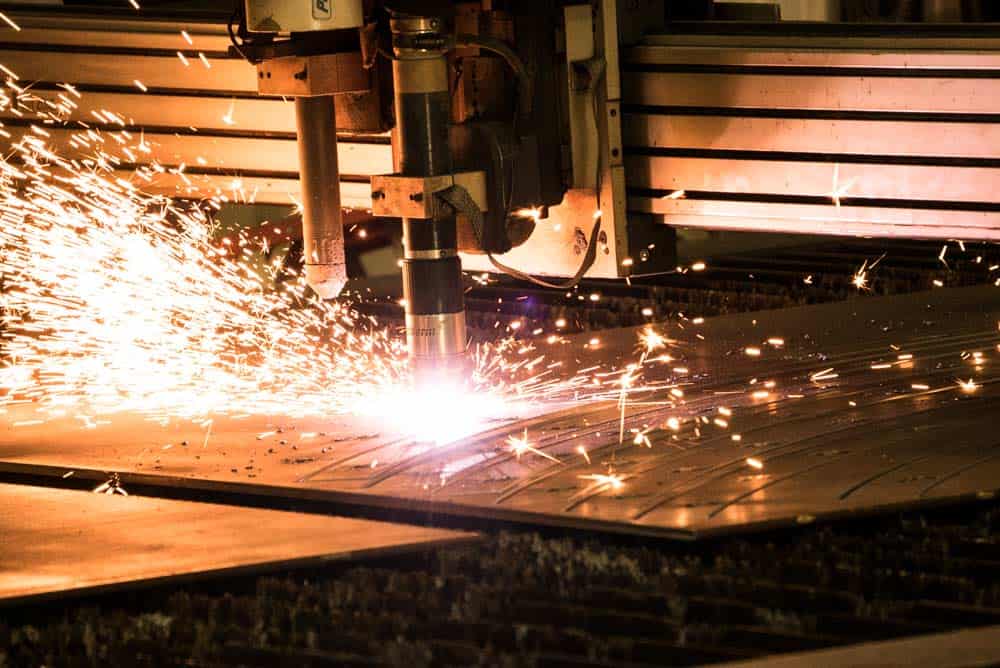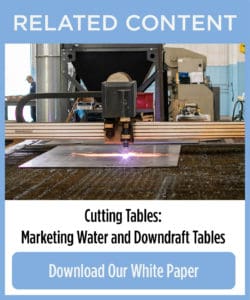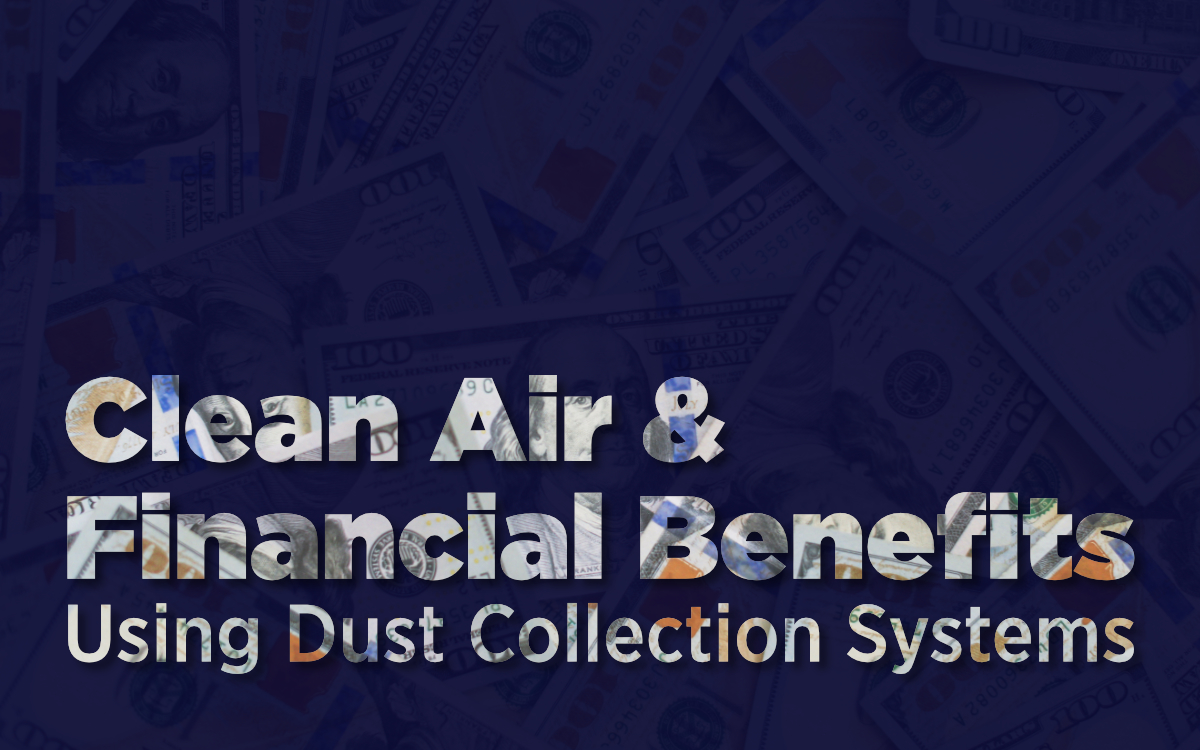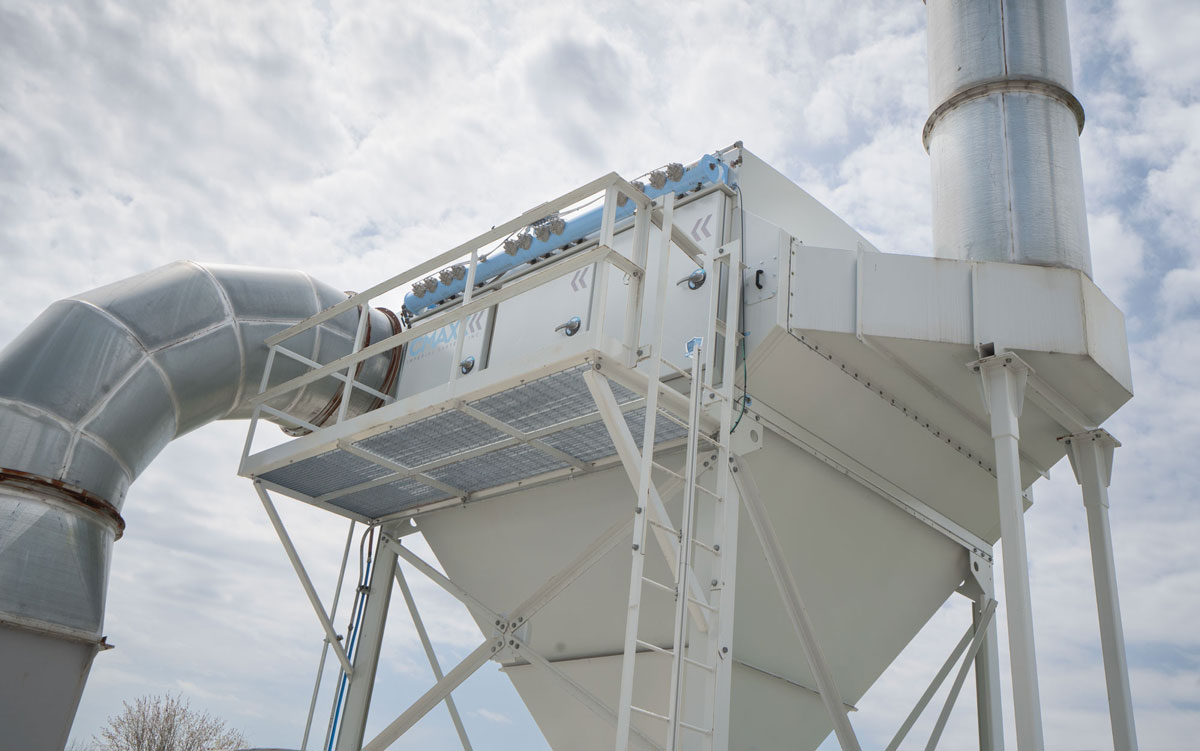With a CNC plasma cutting table, it’s essential to have some way of controlling the dust and fumes from the cutting process. One solution is a water table, where the metal being cut is underneath a layer of water that prevents it from generating fumes. The other solution is a downdraft table, where air flows down through the table and pulls dust and fumes away from the cutting area.
We have worked with customers who are using both of these types of dust and fume control on their CNC plasma tables, and we’re discovered some serious issues that people encounter with the water tables. While the water table may be a lower up-front cost than a downdraft table with a dust collection system, many people find that the ongoing costs and problems with water tables make them a bad long-term investment.

Here are some of the primary issues our customers have experienced with water tables:
“We waste a lot of time adjusting the water levels. Whenever the water level isn’t correct, you get a lot of smoke and steam in the building.”
“If the sheet isn’t sitting perfectly flat, the water doesn’t always cover it and there are a lot of fumes released from that. Also, if there’s any warping, this can create a real problem with smoke and fumes.”
“Disposing of the water is a major issue. It’s contaminated with all kinds of things, and it has to be pumped out of the machine. Then it has to be processed before we can dispose of it.”
“Once you pump out the water you have to handle all the sludge. It’s a mess to clean out, takes up a lot of time, and nobody likes dealing with it.”
 “With galvanized metal, we get ‘white rust’ corrosion from cutting on the water table. It can cause some serious damage to the parts.”
“With galvanized metal, we get ‘white rust’ corrosion from cutting on the water table. It can cause some serious damage to the parts.”
“When wet parts come off the table, they can’t just be sent off to the fabrication area. We have to have a space to set them out to dry, and they can’t be used till they’ve dried off.”
“We’ve had issues with the table overflowing or leaking, and then we’ve got dirty water all over the shop floor, and it’s a hazard and a mess.”
“Our wet table creates steam and splashes of hot water. There’s the potential for someone to get burned. We’re also concerned about water or steam damaging the cutter’s computer.”
“The water and steam evaporating off the water table puts so much humidity into the air that we’re starting to see rust on our tools and equipment, which we’re not happy about.”
ADVANTAGES OF A DOWNDRAFT TABLE:
- Almost no adjustment is needed once the system is in operation. No water levels ever need checked or refilled.
- Consistent airflow pulls fumes away from the CNC plasma cutter even if the metal isn’t flat to the table or if it warps during cutting.
- Dust is usually collected in a drum or hopper for easy disposal. No pumping, no sludge, and no figuring out how to dispose of contaminated water.
- Maintenance is minimal compared to a water table. The dust collector will require filter changes (the average is about once a year, depending on use). Changing filters is a simple process and will involve much less down time for the CNC plasma cutter than pumping water and cleaning out sludge.
- Parts come off the table ready to go. There is no wasted time letting them dry, and no wasted space for parts to sit and dry off.
- A downdraft table fully contains dust and removes it from the work area. There is no leaking or spilling water to create a hazard, and no dust or fume particulate escapes into the work area.
- The air flowing through a downdraft table produces no steam and no splashing of hot water. All sparks and hot materials are pulled down and away from the work area safely.
- A zoned downdraft table collects fumes and dust only where they are being produced, which is efficient and keeps all fumes contained to a small area for removal.
Over time, a downdraft table for your CNC plasma cutting system will save you time and money. Up-front cost is lower on a water table, but a company doesn’t buy a CNC plasma cutting system for short-term use. You’re going to have this table for a long time. And over time, our customers have consistently found that the water table costs them much more in maintenance costs, time, and potential safety hazards.
Cost is important, but one of the most important things for you is probably the quality of your product. Companies that manufacture CNC plasma cutting equipment will tell you that a downdraft table produces a cleaner cut and a higher quality product than a water table. If they tell you that a water table produces equal or better quality, you can bet they want to sell you a water table. The industry knows that if you want the cleanest CNC plasma cuts, a downdraft table is the way to go.
Read our white paper on cutting tables.


